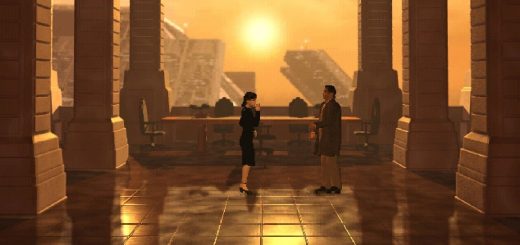How Battlefield 6’s New Map Reveals Solve My Biggest Beta Problem
Even before its official reveal, in that time when rumors swirled about Battlefield Labs and what might come from it, I knew I’d have to temper my enthusiasm for Battlefield 6. I’d been burned before, most notably with DICE’s last Battlefield game, so despite my fan status of the franchise, it felt necessary. Then Battlefield 6 was officially revealed; the Beta came and went, and things were mostly good, but one problem stuck in my side like a thorn: the scale.
Despite everything the massively popular Battlefield 6 Beta did right, I couldn’t shake the feeling that it all seemed small — the maps, I mean. Changes to classes, gunplay, and destructibility deserve their day in the sun. Jets felt relegated to economy seating on such small maps; there were no boats or AA vehicles, and even beyond the vehicles, infantry gunfights didn’t feel distinct based on where they occurred on the map. Some time at a recent hands-on event has, for the most part, lifted that burdensome feeling, though, and the new Mirak Valley map DICE showed off has a whole lot to do with that.
A New Map Remedies My Biggest Worry About Battlefield 6
Despite being revealed alongside Operation Firestorm, a returning Battlefield 3 classic and contender for all-time greatest map, Battlefield 6’s Mirak Valley came away as the highlight of the event. Set in the rolling hills and farmlands of Tajikistan, Mirak Valley is a vast, war-torn landscape that exists comfortably on the margins between infantry, air, and armored combat. It’s structured with an infantry inward, vehicle outward design that’s a proven success, tried and tested in the past Battlefield entries.
To state the obvious, Mirak Valley is big. What impressed me most about the map, however, is that though it might not look like it, it’s also pretty diverse. This is likely because, while it’s an all-out warfare map, it was designed with two bespoke combat zones, built to support other, more infantry-focused game modes. When experienced in a larger mode like Conquest or Battlefield 6’s Escalation, that careful design consideration really makes a difference.
Hectic gunfights in Mirak Valley’s towering mid-map construction sites feel entirely different from skirmishes in its rustic villages to the south, where complex and diverse living spaces create a tense cat-and-mouse dynamic.
Carefully Considered Map Flow Makes Battlefield 6’s Mirak Valley Stand Out
Beyond any vehicle concerns, that design philosophy is what sets Mirak Valley and a map like Liberation Peak apart, even though they are both Conquest experiences, both set in the same country. Liberation Peak had a small village, a fortified hill, and a narrow mountain pass, but even still, Mirak Valley felt like a night-and-day difference in experience. Mirak Valley felt less uniform but still carefully measured, with player flow guided like water through a canal.
That metaphor is apt with respect to vehicle combat as well, as if infantry is the flow of water in the canal, tanks are the waves crashing against the walls, and jets and helicopters are the rain above. The vehicles feel more relevant and diverse in Mirak Valley than they did in any of Battlefield 6‘s Beta maps, and that is a very good thing.
Battlefield 6’s Two Newest Maps Give Vehicles Room to Play
Aside from the structures surrounding the main Conquest capture points, Mirak Valley is a perfect example of well-designed vehicle zones. Of all of Battlefield 4’s giant maps, Golmud Railway stands in my mind as one of the best vehicle-focused maps in that entry, but it wasn’t designed with equal promise for infantry. Mirak Valley feels like a bridge between that map and the three maps in the Beta, and that, to me, is a great sweet spot.
Battlefield 6‘s updated rendition of Operation Firestorm is also a much more apparent improvement on the game’s vehicle combat, but that shouldn’t be news to anyone familiar with the franchise. Firestorm is certainly not weighted as well in terms of evenly dispersed structures, but it doesn’t need to be, since it’s always nailed the flow and freedom elements Mirak Valley displays regardless. What’s really surprising, though, is that this new rendition plays very well with the title’s improved destructibility, which certainly wasn’t a guarantee.
The developers behind Battlefield 6 recently shared that nostalgia and fan expectations make it difficult to remaster old Battlefield maps, so the positive reception and excitement surrounding the updated Operation Firestorm must feel like a relief.
Maintaining This Momentum Could Make Battlefield 6 an All-Timer
Needless to say, my experience on both of these maps left me feeling much more confident in Battlefield 6’s success and sustainability. That’s exciting as a fan of the franchise, but more importantly, it’s exciting as a gamer who daydreams about the best of Battlefield, as it was in its heyday. Only three remain unseen out of the nine maps Battlefield 6 will have at launch; I hope that they keep the momentum and size this showcase had on offer.
It’s not a terrible loss if not, though, as the game should have arenas worthy of the effort put into Battlefield 6’s new infantry systems and mechanics. It’s also more than likely that the game will receive free and frequent additional maps. I just hope that DICE is taking note of the positive reception these bigger maps have received — especially Mirak Valley — because at the end of the day, the scale it delivers is what separates DICE’s Battlefield from any other kind.


